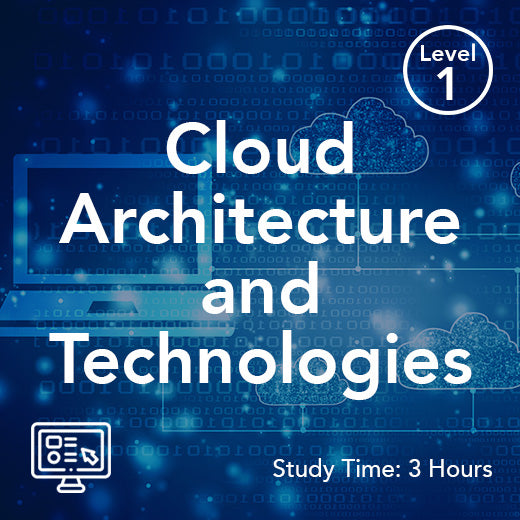Understanding ETSI: A Beginner's Guide to European Standards
- , by Stephanie Burrell
- 10 min reading time
In the world of technology and communication, standards play a crucial role in ensuring that devices and systems work seamlessly together. At the heart of this endeavour in Europe is the European Telecommunications Standards Institute, more commonly known as ETSI. This organisation is responsible for developing global standards that enable efficient and effective communication across industries and borders. Understanding ETSI and its work can be a game-changer for anyone looking to navigate the complex landscape of technology standards. In this guide, we will unravel the basics of ETSI, shedding light on its purpose, processes, and impact on everyday technology.
Introduction to ETSI
The European Telecommunications Standards Institute (ETSI) is a pivotal organisation in the realm of technology and communications. Its primary objective is to create and maintain global standards that promote interoperability and seamless integration across various industries. Understanding ETSI's role in standardisation can provide valuable insights into its influence on technology development and implementation.
What is ETSI?
ETSI is a leading organisation based in Europe dedicated to standardising telecommunications and related sectors. Its mission is to produce standards that ensure the interoperability and reliability of various communication systems. Through its comprehensive framework, ETSI helps industries collaborate more effectively, thus fostering innovation and reducing barriers to entry in the market.
The institute’s work spans numerous technological domains, impacting manufacturers, service providers, and end-users. By participating in ETSI's initiatives, stakeholders can contribute to shaping the future landscape of technology. This participation also ensures that new products and services can operate efficiently within the established standards, thus benefiting a broad spectrum of industries.
ETSI's extensive global network of members includes key players from industry, academia, and government. This diversity ensures that the standards developed reflect a wide range of perspectives and needs, making them robust and widely applicable.
Brief History and Formation
ETSI was founded in 1988 as a response to the growing need for standardisation in telecommunications across Europe. Its establishment marked a strategic move towards creating a unified approach to technology standards that could transcend national boundaries.
Before ETSI's creation, European countries operated with disparate communication standards, creating barriers to cross-border cooperation. The formation of ETSI brought about a coordinated effort to streamline these standards, thus facilitating international collaboration.
The success of ETSI in harmonising standards has been significant. Over the years, it has expanded its remit beyond telecommunications to include areas such as broadcasting, cybersecurity, and emerging technologies like IoT (Internet of Things). This broadening of scope reflects ETSI's commitment to staying relevant in the fast-evolving tech landscape.
Importance in the European Context
ETSI holds a unique position within the European technological framework. By providing a standardised set of guidelines, it enables countries and companies to work together more effectively. This collaboration is crucial in driving economic growth and innovation within Europe.
The institute serves as a bridge between European entities and the wider global market. Through its standards, ETSI ensures that European products and services are competitive on the international stage, thus supporting economic stability and growth.
Moreover, ETSI plays a vital role in the regulatory environment, offering guidance and support to policymakers. This involvement ensures that regulations align with technological advancements and market needs, thus creating a balanced approach to innovation and regulation.
Role of ETSI in Standardisation
ETSI's central role in standardisation spans multiple industries, making it a cornerstone of technological development. By developing and maintaining standards, ETSI ensures that new technologies can be seamlessly integrated into existing systems.
Developing Global Standards
ETSI is instrumental in developing standards that have a global reach. These standards facilitate international trade and cooperation by ensuring that products and services from different countries can interoperate without issues.
-
Research and Analysis: ETSI's process begins with thorough research and analysis of existing technologies and market needs. This step ensures that new standards are relevant and forward-looking.
-
Collaboration: The institute collaborates with various stakeholders including industry experts, academics, and government bodies. This partnership fosters a comprehensive approach to standard development.
-
Drafting and Approval: Proposed standards undergo a rigorous drafting and approval process, ensuring they meet the required quality and applicability standards.
-
Implementation and Review: Once approved, the standards are implemented, and their impact is continuously reviewed to ensure they remain effective and relevant.
ETSI's global standards serve as a benchmark for quality and innovation, helping industries maintain consistency and reliability in their offerings.
Promoting Innovation and Competition
ETSI's standards are not just about conformity; they are also about fostering innovation and competition. By providing a common framework, ETSI encourages companies to innovate within the boundaries of established standards, thus driving technological progress.
-
Level Playing Field: ETSI ensures a level playing field where both established players and newcomers can compete fairly.
-
Encouraging Creativity: With a stable foundation provided by standards, companies can focus on creative solutions and improvements, knowing they have a reliable baseline to build from.
-
Market Entry: Standardisation lowers the barriers to market entry, allowing smaller companies and startups to introduce new products and services more easily.
Thus, ETSI's work directly contributes to a dynamic market environment that is conducive to growth and development.
Key Areas of ETSI's Work
ETSI's influence extends across various sectors, each with its own unique challenges and requirements. Its work in these areas ensures that technological advancement aligns with market needs and consumer expectations.
Telecommunications and Broadcasting
ETSI has played a pivotal role in shaping the telecommunications and broadcasting industries. Its standards ensure that communication systems are interoperable and efficient, enabling seamless connectivity across devices and networks.
For instance, ETSI standards are crucial for mobile communications, ensuring that mobile networks can support a wide range of services and applications. This standardisation is vital for maintaining the quality and reliability of mobile services, which are essential in today's connected world.
In broadcasting, ETSI's work ensures that content can be distributed efficiently across different platforms, enhancing the viewing experience for consumers. By standardising broadcasting protocols, ETSI helps maintain the quality and reliability of media services.
Moreover, ETSI's focus on telecommunications and broadcasting supports the development of new technologies, such as 5G, ensuring they are ready for widespread adoption.
Cybersecurity Standards
In the realm of cybersecurity, ETSI's standards provide a critical framework for protecting digital infrastructure. As cyber threats become more sophisticated, ETSI's work in this area is increasingly important.
Cybersecurity standards developed by ETSI focus on ensuring that digital systems are secure and resilient. These standards cover a wide range of areas, including data protection, network security, and secure software development.
By adhering to these standards, organisations can significantly reduce their vulnerability to cyber attacks. ETSI's standards help create a secure digital environment, which is essential for maintaining consumer trust and protecting sensitive information.
Furthermore, ETSI works closely with international partners to ensure that cybersecurity standards are globally applicable, ensuring a unified approach to digital security.
Internet of Things (IoT) Initiatives
ETSI's work in the Internet of Things (IoT) is focused on creating standards that enable the seamless integration of IoT devices into existing networks. As the IoT ecosystem grows, ETSI's initiatives ensure that these devices can communicate effectively and securely.
Interoperability is a key focus area for ETSI in the IoT domain. By standardising communication protocols, ETSI ensures that IoT devices from different manufacturers can work together without compatibility issues.
Security is another critical aspect of ETSI's IoT initiatives. The institute develops standards that address the unique security challenges posed by IoT devices, ensuring that they are protected from cyber threats.
ETSI's IoT standards also support innovation by providing a stable framework for developing new applications and services. This standardisation helps drive the growth of the IoT market, enabling the creation of new business models and opportunities.
Understanding the ETSI Process
ETSI's process for developing standards is both rigorous and inclusive, ensuring that the resulting standards are robust and widely applicable. This process involves collaboration with a diverse range of stakeholders, reflecting a broad spectrum of needs and perspectives.
How Standards are Developed
The development of ETSI standards is a comprehensive process that ensures quality and relevance. This process can be broken down into several key steps:
-
Identifying Needs: The process begins with identifying the need for a new standard or the revision of an existing one. This step involves extensive research and consultation with stakeholders.
-
Drafting: Experts draft the proposed standard, considering input from various industry players and technical committees. This collaborative approach ensures that the draft is comprehensive and practical.
-
Public Review: The draft is then subjected to a public review, allowing stakeholders to provide feedback. This step is crucial for identifying any potential issues and ensuring broad acceptance.
-
Approval and Publication: Following the review, the standard is revised and submitted for approval. Once approved, it is published and made available for implementation.
This structured approach ensures that ETSI standards are of the highest quality and meet market demands effectively.
Members and Stakeholder Involvement
ETSI's membership includes a diverse range of stakeholders, each playing a crucial role in the standardisation process. This diverse involvement ensures that ETSI standards are comprehensive and applicable across various sectors.
-
Industry Leaders: Major companies contribute their expertise and insights, helping shape standards that support technological advancement and market needs.
-
Academia: Researchers and academic institutions provide valuable theoretical insights and cutting-edge research, informing the development of forward-looking standards.
-
Government Bodies: Policymakers participate in the standardisation process, ensuring that standards align with regulatory requirements and public policy objectives.
Through this collaborative approach, ETSI ensures that its standards reflect a balanced view of different interests and needs, making them robust and widely accepted.
ETSI's Impact on Everyday Life
ETSI's standards have a profound impact on everyday life, influencing how we interact with technology and use various products and services. By ensuring interoperability and reliability, ETSI plays a crucial role in enhancing the quality and functionality of everyday technology.
Influence on Technology Adoption
ETSI's standards significantly influence the adoption of new technologies. By providing a reliable framework, these standards reduce the risks associated with new technology implementation, encouraging more rapid adoption.
-
Consumer Confidence: Standards increase consumer confidence in new technologies, knowing that they are safe and reliable.
-
Accelerated Innovation: By reducing technical barriers, standards enable faster innovation and deployment of new technologies.
-
Global Compatibility: ETSI's global standards ensure that new technologies are compatible across different markets, facilitating international trade and cooperation.
Thus, ETSI's influence extends beyond Europe, impacting global technology trends and adoption rates.
ETSI Standards in Daily Products
Many products and services we use daily are governed by ETSI standards. These standards ensure that technology is accessible, safe, and efficient for all users.
For example, mobile phones, internet services, and broadcast media rely on ETSI standards to function seamlessly. These standards ensure that devices can communicate effectively, providing a consistent user experience.
Moreover, ETSI's work in areas such as cybersecurity ensures that our digital interactions are secure, protecting our personal data from potential threats.
By maintaining high standards of quality and reliability, ETSI significantly enhances the utility and enjoyment of everyday technology, making it an integral part of modern life.


































